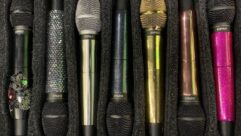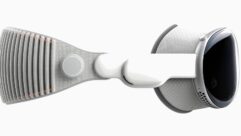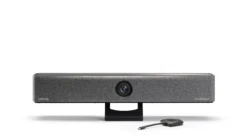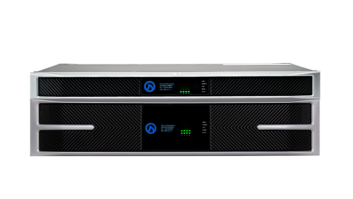A Different Angle
Jan 1, 1999 12:00 PM,
David Klepper
Until recently, sound systems in Orthodox Synagogues could not be used onthe Jewish Sabbath, sundown Friday evening to after sundown Saturdayevening, and all important worship on the Sabbath and holy days was donewithout benefit of sound reinforcement, except by the acoustical propertiesof the synagogue interiors. This ban still holds in some cases, but limitedOrthodox rabbinic approval has been obtained for two different approachesto Sabbath and holy day sound amplification. Both share the concept thatthe system is designed for reinforcement of the Drash or Dibbur, what wouldin some ways correspond to the sermon in Christian worship, and the systemshould not be used for reading from the Torah scrolls, singing or chanting.
Single-sided electronic amplificationThis approach was developed by Israel’s Zomet Institute in Gush Emunim andis used successfully in some Sephardic synagogues in permanentinstallations. The prohibition of the use of electricity is based on theprohibition of lighting or extinguishing a fire. Because an electronicaudio signal has many zero crossings, even if a normal sound system is lefton, the audio signal itself turns on and off many times. By introducing acurrent and voltage bias, as with a condenser mic, the current is onlyvaried and not switched on and off, which follows the Talmudic permissionto allow an existing fire to warm food. In certain cases, the system hasbeen approved only with a condenser mic phantom powered by an integratedamp-mixer-EQ system, but it is also possible to have a battery in parallelwith a large condenser to keep constant current flow in loudspeaker lines.A capacitor loudspeaker can also be used. (See Figure 2.) The remainder ofthe system design follows normal practice, except that the loudspeakerpower handling is derated to 25% if the voice coil is moved half-way offcenter by bias current. Other than that, the quality inherent in electronicreinforcement can be preserved, and such systems are useful both forreinforcement in the synagogue and for overflow coverage into an adjacentarea during High Holy Days when normal seating capacity must often beexpanded. Remember to use digital delay when appropriate. Although thisapproach is suggested for Orthodox synagogues, it might be appropriate tohouses of worship for the Reform, Conservative and Recon-structionistmovements when the rabbi and congregation may invite Orthodox rabbis tospeak or teach.
Air amplificationAmplification of sound in the air domain without transduction toelectricity and back would seem impossible at first glance, but it has beenaccomplished through the technology of fluidics developed by DefenseResearch Technology, Rockville, MD. This firm developed sophisticatedreal-time, air-only control systems for the U. S. Navy for locations whereelectricity was prohibited, and the valves used for this type of controlproved capable of air amplification. A weak modulated air stream canmodulate a continuous stronger stream to produce the needed amplification.(See Figure 3.) Two-way systems (treble and bass) are possible withincreased fidelity, and the technology is vastly improved over the initialsystem. This technology, however, has not yet received the amount ofresearch needed to bring quality levels up to that of electronic systems,and I find its usefulness mainly in High Holy Day overflow amplification.Notice the built-in synchronization delay inherent in sending sound throughtubes.
The rabbi of each Orthodox congregation is the only individual who can ruleon the applicability of either system, and the sound system contractor oracoustical consultant should not attempt to bypass his authority. The rabbimay contact the Institute for Technology and Halacha (Rabbi Yitkhak IsaacHelprin, director, 1 Pisga Street, Beyt Vighan, Jerusalem, Israel) forinformation on the Halachich correctness of the air system. Rabbi MarcAngel at North America’s oldest congregation, Shearith Israel, the Spanishand Portuguese Synagogue, will also be glad to assist in evaluation theelectronic approach (8 West 70th Street, New York, NY 10023).
In particular situations, the speech-only Sabbath system might shareloudspeaker components with a more general system that can be used for avariety of other purposes. Note that synagogues that do not use soundamplification on the Sabbath may have important uses for systems at othertimes, even in the main sanctuary. The late Rabbi Menahim Schneerson, thefamous head of the Lubavitch Hassidic group and the Chabad movement, oftenspoke to several thousand listeners with amplification during She’urs.Large synagogues need intercommunication, CCTV and other electronic aids.Some Orthodox organizations include complete recording, television andradio studios, teleconferencing rooms, Internet connections, and othermodern aids to reaching their congre-gants and fellow Jews.
Conversion to orthodoxySeveral non-Orthodox congregations have become Orthodox or returned toOrthodoxy and then decided that the sound system could no longer be used onthe Sabbath and Holy Days. In two cases, this step led to revealingacoustics problems that the sound system had successfully hidden. Problemsencountered include high background noise produced by the heating andair-conditioning system and acoustic tile ceilings that prevented effectivesound reinforcement from one end of the room to the other. Although thecombination of a mechanical and acoustical engineer may be essential tosolve the first problem, simple measures like reducing fan speeds,adjusting or removing dampers, or lining that portion of the ductworknearest the return and supply outlets can make the necessary difference.Acoustic tile can be rendered sound-reflecting by the application ofGlidden Industries’ Ultry-Hyde Block Filler, a heavy paint made to fillporous cinder block to approximate concrete block architecturally.
Non-orthodox synagoguesAll synagogues have an Aaron Kodesh, the freestanding container for thescrolls of the Torah, at the end of the hall closest to Jerusalem, andusually have the teba or desk where the scrolls are placed to be readnearby in many European tradition synagogues (Ashke-nasi) or the center ofthe congregation in all Mediterranean tradition and other Europeantradition congregations. There is also a separate lectern for the dibbur ordrash (see Figure 4a and 4b). In other respects, the music and style ofworship of the non-Orthodox movements can vary from close to Orthodox tonearly all the styles found in North American Protestant congregations.Although there are a few Conservative and Reform congregations that havefine pipe organs, the total in North America probably does not exceed 25.Organs were banned with the destruction of the Jerusalem Temple andremained banned for Sabbath use in Orthodox congregations. Electronicorgans are pervasive, and these often sound noticeably inferior because ofinadequate amplification and loudspeaker power handling capacity. A soundconsultant or contractor can be of great help to a non-Orthodoxcongregation by suggesting a synthesizer instead of an electronic organbecause the money saved can then be used for the amp and bass loudspeakerpower required for musical sounds, and with combined use with the musicreinforcement portion of the sound system, the versatility will beappreciated, and the overall system will be much more useful for mostcongregations.
In addition to regular speech reinforcement, overflow seating withappropriate delay is almost always required along with coverage of suchancillary spaces as lounges, offices, lobbies and possibly outdoor areas.CCTV for latecomer use in lobbies and for closer communication from leadersto congregants in overflow areas are other possibilities. Some non-Orthodoxcongregations tape all services, and some provide radio broadcasts.Hearing-assistance systems (IR and FM have replaced magnetic induction) andeven complete simultaneous translation systems are also in use. Usually,the overflow space doubles as an auditorium and social hall and can benefitfrom both a ceiling-distributed speech and overflow coverage system and aseparate high-power music amplification system for the music of teenageparties, weddings and Bar Mitzvah celebrations. Such systems are alsouseful in Orthodox congregations, but without the overflow coveragecapability, which would be handled by the special system discussed earlier.Choir rehearsal rooms can use recording and playback, and again, the normalintercom and closed-circuit systems can be valuable.
Loudspeaker coverageThe six types of loudspeaker systems discussed in my 1971 AES paper remainthe standard today, with the addition of the horizontal line-source systemdeveloped at the same time by the Latter Day Saints Church Engineeringgroup in Salt Lake City, usually applied along the length of the hall, andby myself with my former partner Larry King’s help, applied across thewidth of the hall. (See Figure 1.) I know other systems are in use,including side-wall loudspeakers and floor and under-pew loudspeakers. Anyrational analysis of these systems would indicate that some clarity must belost in comparison with the alternatives, although modern signal processingequipment can get certainly better results out of such muddy systems thanbefore. No rabbi, however, will want his voice amplified from the floor orunder the pew because his voice is supposed to carry a sacred message, andany rabbi understands its sacredness is reduced when the system tickles theposterior before the message reaches the ears.
Interfacing with the congregationThe consultant or contractor will undoubtedly interface with a house orbuilding committee, a business manager and the rabbi and possibly hisassistants. In an Orthodox congregation and many Conservativecongregations, the rabbi is the boss, and he will rule on all mattersaffecting worship, even though it is in these congregations where one findsthe most educated laity, with nearly every adult male member able to leadthe congregation in any prayer. As one moves away from Orthodoxy, one findsa variety of power structures, down to the small, out-of-the-way Reformcongregation that has a student rabbi fly in every other weekend to teachand conduct services. Also, in all groups, the kind of worship and even thelevel of decorum vary. A wise consultant or contractor will want toexperience worship with the congregation and observe social events. It isnot necessary to know Hebrew or even attempt to understand the service. Ifit is an Orthodox or Conservative congregation, men should bring a yarmulke(head covering) or borrow one from the stack near the entrance door andkeep it on their head during the time they are on the premises. Whenattending services, Gentiles should not wear a tallith (prayer shawl).Stand when the congregation stands and sit when they sit, and if conductinga subjective survey, pick times to move from one place to another whenothers are moving but not during the standing silent meditation. If you arenot Jewish, you will not be embarrassed by asking questions, by not knowingeverything, and by bringing insights that you can bring from experiencewith Christian congregations to the particular problems of a synagogue. Ifyour suggestions are not applicable, as long as you accept that fact, youwill still be respected and appreciated for making the suggestions. On theother hand, if you are Jewish and do not wish to disguise the fact, itwould be wise to take a course and bring yourself up-to-date on what yourreligion is about before entering the marketplace of ideas and products toassist your own people.
AcousticsWhen I was doing active acoustical consulting for remedial situations inNorth America, many congregations of various religious groups would ask meto come to look at a sound system problem. Often, there was a mechanicalequipment noise problem or even such room acoustics problems as acousticaltile ceiling, a hard, curved rear wall and mechanical equipment locatedpractically within the worship space and zero vibration isolation for themechanical equipment. Every good sound system contractor is also somewhatan acoustical engineer, and a number of good architectural acousticstexbooks and handbooks can help. In addition to the Acoustical Society ofAmerica’s Worship Space pamphlet, I strongly recommend the worship spaceacoustics pamphlet of the American Guild of Organists as inexpensive andfull of information, even though it may have been aimed primarily atChristian houses of worship. Regarding the physics of sound, a kantor is acantor, singing solos, leading the congregation and interacting with it,whether he is in a church or a synagogue, and the spoken word must alwaysbe understood.










